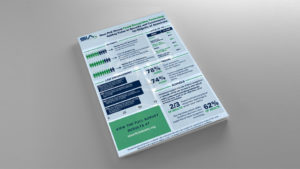Issue: Facial Recognition
New research shows public support for Facial Recognition
In a demographically-matched survey of U.S. adults conducted in August 2020, Schoen Cooperman Research found widespread public support of facial recognition applications. The statistics showed positive support of facial recognition for public safety, air travel, workplace and other application areas.
SIA Principles for the Responsible and Effective Use of Facial Recognition Technology

SIA believes facial recognition must be used only for purposes that are lawful, ethical and nondiscriminatory. This document explores SIA’s values and the benefits of facial recognition, outlines each of SIA’s core principles regarding the responsible and effective use of facial recognition technology and makes recommendations for public- and private-sector applications of the technology, including use of facial recognition by law enforcement.
Here are several examples of positive use cases of facial recognition technology highlighting how the technology can help protect against violence, theft or other harm. For more detailed examples and success stories, see SIA's article here.
Identifying and Arresting an Assailant
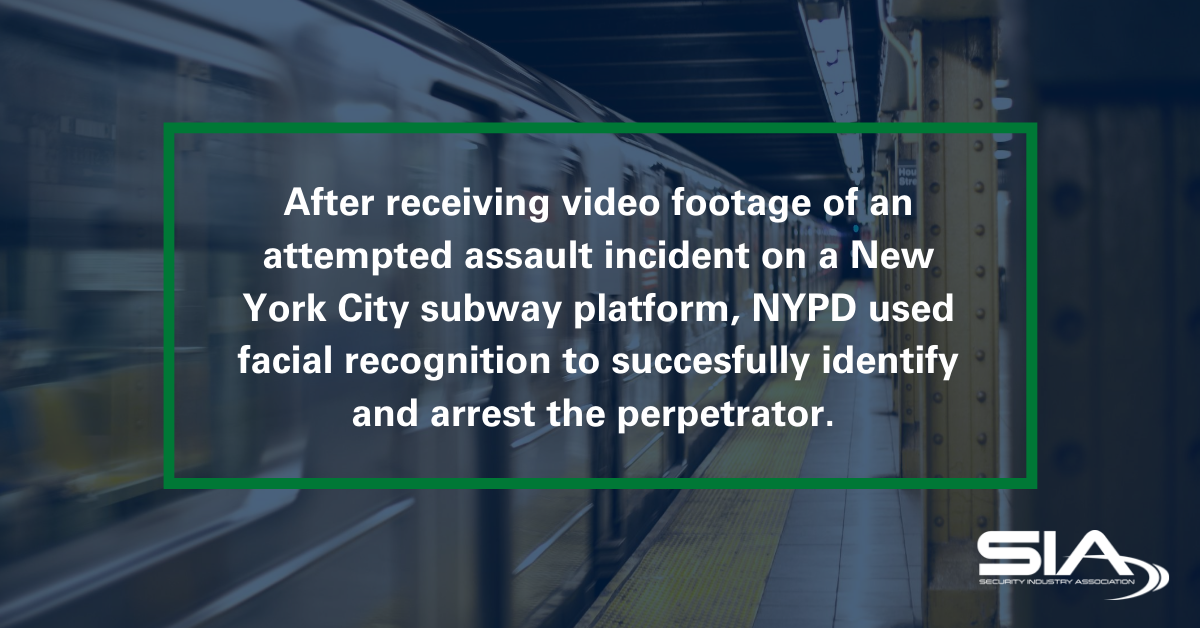
The New York City Police Department (NYPD) arrested a 31-year old man after he tried to rape and assault a woman on the subway at a station in midtown Manhattan. The NYPD facial recognition team utilized a video taken by a bystander to identify the man, based on a photo taken from a previous arrest.
Finding an Alleged Shooter
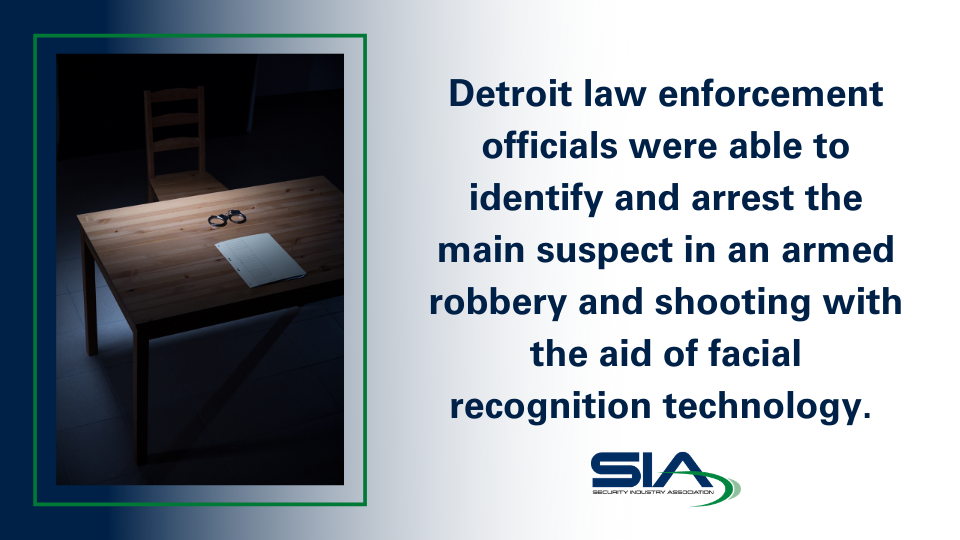
A male victim was shot and seriously injured during a robbery in Detroit, Michigan. Using images from high-quality video surveillance covering the location, investigators aided by facial recognition software were able to identify the suspect, who was later taken into custody after further investigation.
Bringing a Sexual Predator to Justice

A 15-year old girl in Scranton, Pennsylvania, was sexually assaulted by an adult male she met online. Beyond seeing him in person, the only additional information she had was from his online profile. Police were able to use facial recognition on one of the digital images to provide some potential matches from a state database, from which the victim was able to identify a likely match. After additional investigative work, authorities obtained a search warrant for the home of the identified suspect, who later admitted to the crime.
Identifying a Killer Who Targeted LGBTQ+ Victims

In Detroit, Michigan, in 2019, three members of the LGBTQ+ community were shot and killed by a man at a local home. The Detroit Police Department used facial recognition – in combination with other investigative tools – to help identify the suspect based on video images from a nearby gas station. The suspect was charged with three counts of murder, in addition to other charges.
Enabling More Accurate Identification

Facial recognition contributes to more accurate identification. The National Institute of Science and Technology has found that forensic examiners performed best when supported by facial recognition technology and the most accurate performance resulted when these efforts are combined. Proper use of this technology is critical to protecting the innocent and limiting effects from inherent human biases, as eyewitness identifications in criminal investigations are notoriously prone to error. According to the Innocence Project, mistaken eyewitness identifications have been the key factor in 71 percent of wrongful convictions in the U.S. later overturned.
Protecting Patients, Staff & Critical Research in Health Care Settings
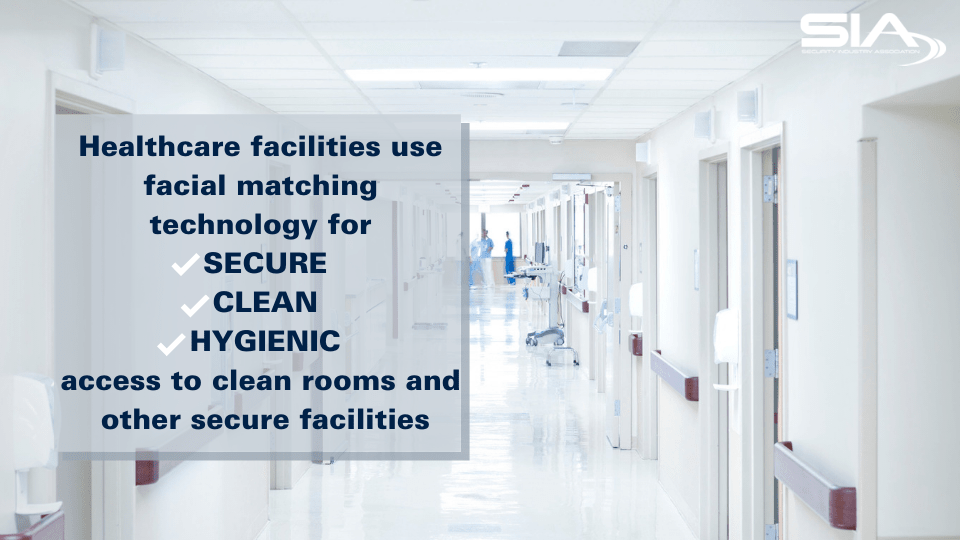
During and post-COVID-19, there is considerable opportunity to use facial matching technology for access control to help ensure security and safety. Many hospitals have already implemented facial recognition to eliminate the need for front-line health care workers to swipe badges or type in codes to verify their credentials. Reducing contact with potentially contaminated surfaces is key when staff must be on high alert around the spread of germs and disease. Such technologies also can perform dual security and hygienic functions in more common settings as well, providing touchless access to virtually any workspace and giving an added layer of hygienic security, as opposed to handing over a pass card or touching a fingerprint scanner.
Strengthening Airport Security

Facial recognition technology is deployed in dozens of airports across the United States and continues to grow. U.S. Customs and Border Protection, along with airport officials, match passport photos to a database to verify the identity of thousands of travelers entering and leaving the U.S. each week. The technology is proving to be an important tool for border security. As of June 2020, nearly 300 individuals have been intercepted attempting to enter the U.S. under a fraudulent identity. Beyond violating laws against illegal entry, passport fraud fuels many other types of crime, including human trafficking and drug smuggling.
Identifying an Armed Robber in Indiana

In 2018, detectives in Munster, Indiana, tried to identify a suspect who had attempted to rob a local business at gunpoint, after releasing a photo from the location’s surveillance system which was shared by local media. No leads were generated until facial recognition was used to find a possible match, a man who had skipped parole after serving a prison sentence for nine armed robberies in Illinois. The suspect was identified after the store owner was shown a photo lineup that included his picture, and the suspect was arrested several months later. Without facial recognition, the suspect would likely never have been found.
Identifying the Capital Gazette Gunman

Jarrod Ramos was angered by a story the Capital Gazette (a newspaper headquartered in Annapolis, Maryland) ran about him in 2011 and brought a lawsuit against the paper for defamation, which a judge later dismissed. In 2018, Ramos entered the Gazette's office building with a shotgun and killed five employees, leaving two others critically injured. Anne Arundel County Police obtained an image of Ramos and sent it to the Maryland Combined Analysis Center, which helped identify him by comparing the photo to others in the Maryland Image Repository System.
Combating Forced Labor Trafficking

The Kansas Department of Revenue’s use of facial recognition software in 2014 led to the investigation of the largest forced labor trafficking case in the United States, all through identifying cases of driver’s license fraud in their database.
Improving Investigations and Public Safety

For over a decade, federal, state and local law enforcement have effectively used facial recognition technology in thousands of investigations. Many public safety officials feel that this technology is becoming a game-changer for keeping our communities safe, pointing to instances in which crimes would have never been solved or prevented without it. Facial recognition allows investigators to narrow searches for suspects more quickly, find missing children, rescue human trafficking victims, exonerate the innocent, identify the deceased and benefit our communities in many other ways.
Solving a Child Molestation Cold Case

In 2017, a man accused of sexually assaulting a minor was apprehended in Oregon after a 16-year manhunt. Using facial recognition technology, the Federal Bureau of Investigation (FBI) was able to identify the suspect after a positive match was found when the suspect sought to acquire a U.S. passport. Similarly, in 2014, the FBI used facial recognition technology to help locate and apprehend a convicted pedophile who had been on the run for 14 years, returning him to New Mexico to face justice.
Fighting Human Trafficking
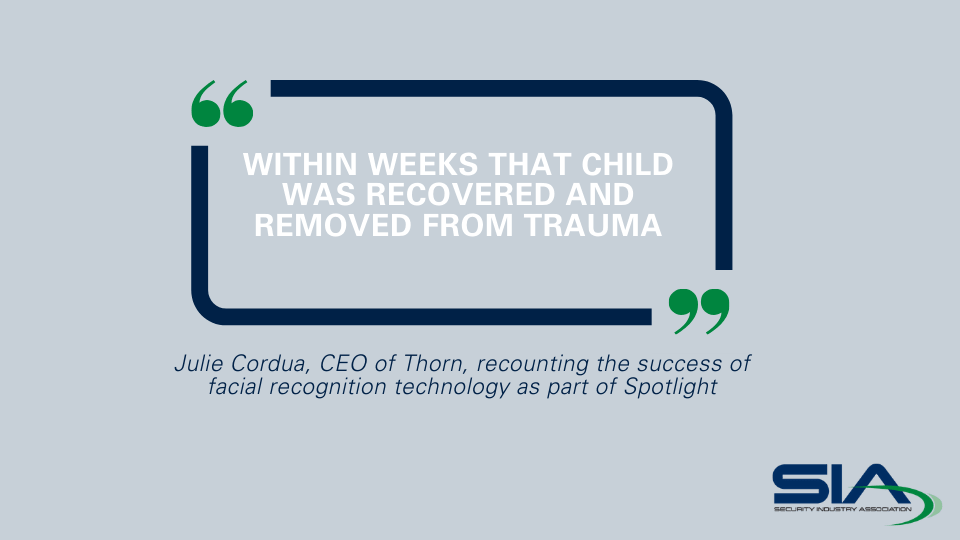
Since 2015 the nonprofit group Thorn has provided a tool called Spotlight, which uses facial recognition among other technologies to help investigators find underage sex trafficking victims in online ads. Spotlight has reportedly been used in 40,000 cases in North America, helping rescue 15,000 children and identify 17,000 traffickers. For example, after seeing an online post about a missing child from the National Center for Missing and Exploited Children, a law enforcement officer used Spotlight to return a list of sex ads featuring the girl. According to a WIRED story, the girl had been "sold for weeks," and the officer's actions initiated a process that "recovered and removed [her] from trauma."
Finding an Alleged Rapist

In New York City in 2019, a man followed a young woman home from work, dragged her into a grassy area and attempted to kidnap and rape her at knife point before eventually letting her go. Investigators used facial recognition technology to compare images from surveillance video at a nearby food store with a mugshot database. Along with additional investigative work, this allowed them to identify a suspect and make an arrest within 24 hours. The 27-year old suspect had previously been arrested for allegedly raping a 73-year old woman but was out on bail.
Counterterrorism

Facial recognition technology can be used in emergencies in which a suspected terrorist attack is imminent or underway by dramatically reducing the time first responders and investigators need to generate leads and identify suspects. This can improve response times or ultimately prevent such attacks or mitigate further harms, saving lives in the process. For example, as reported by the New York Post, New York Police Department detectives used facial recognition technology to identify a man who sparked terror by leaving a pair of rice cookers in the Fulton Street subway station. Within minutes, detectives pulled still images of a suspect from security footage and used facial recognition software to compare them to mug shots in the NYPD’s arrest database. The system returned several hundred potential matches, and after multiple stages of human review, it took NYPD only one hour to identify the suspect.
Catching Impostors Using Fraudulent Passports at Airports

In a 40-day span in 2018, and less than 3 weeks after the installation of facial recognition technology in just one location, three impostors were caught at Washington Dulles International Airport using fraudulent passports. As U.S. Customs and Border Protection (CBP) reports, “posing as someone else when attempting to enter the United States is a serious violation of U.S. immigration law.” A 26-year-old man on a flight from Brazil entered Dulles Airport and presented agents with a French passport. Agents used facial recognition to compare his passport photo to a database of known images with identities, which alerted CBP that the man was carrying a fraudulent passport. The agents discovered the man’s real identification card in his shoe, and it was revealed he hailed from the Republic of Congo, not France. Additionally, a Cameroonian woman posed as an American when trying to enter the United States with a fraudulent passport. The woman presented the CBP officer with U.S. passport in the name of a U.S. citizen, but when the officer ran the passport through the facial recognition technology, it was discovered that their identities did not match. After an additional verification, her true identity was exposed. Similarly, a week prior, a woman was arrested after arriving on a flight from Ghana for posing as a U.S. citizen with a fraudulent passport.
Identifying a Murderer in Las Vegas
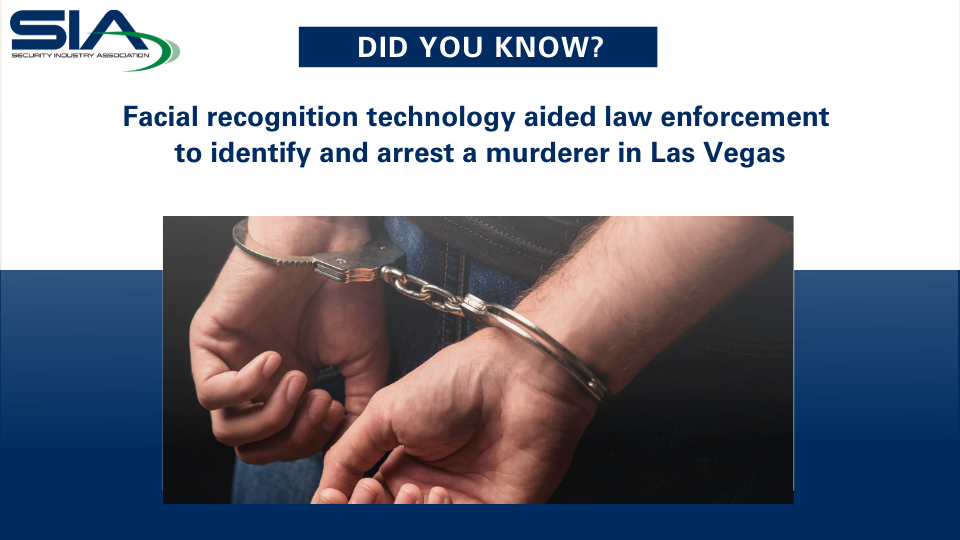
In 2020, police investigated the murder of a man in an Airbnb he had rented with his family. The victim was shot to death over $300 and some computer equipment owed to the suspect. Witnesses who fled the scene produced a Facebook profile of the suspect, allowing officials to verify the identity of the suspect using facial recognition as a secondary tool. Las Vegas Metropolitan Police spokesman Aden Ocampo Gomez said “the technology is strictly a ‘secondary tool’ for investigators that has been in place for a couple of years. The database that police use relies on images of people previously arrested in Metro’s jurisdiction.”
Advances in computing power, combined with rapid improvements in the quality of photo and video technology developed by the security industry over the last 15 years, have allowed facial recognition technology to develop and mature.
Use of facial recognition technology has benefited Americans in countless but underpublicized ways – helping law enforcement find missing children, fight human trafficking, find dangerous criminals and bring sexual predators to justice. At the same time, the technology allows individuals to quickly and conveniently prove their identity to enter a venue, board a plane, perform online transactions and seamlessly access personalized experiences.
Facial recognition is critical to the security field because it enhances capabilities of solutions like video security, access control and identity management systems that help our customers secure their facilities, employees and patrons against the threat of violence, theft or other harm.
SIA Position:
Facial recognition technology makes our country safer and brings value to our everyday lives when used effectively and responsibly. SIA believes all technology products, including biometric technologies, must only be used for purposes that are lawful, ethical and nondiscriminatory.
Facial recognition is highly accurate. According to tests of the leading algorithms by the National Institute of Standards and Technology (NIST), the accuracy of facial recognition technology is now over 20 times better than it was in 2014 and is reaching that of automated fingerprint comparison, which is generally viewed as the gold standard for identification.
Transparency should be the foundation that governs the use of facial recognition technology for both commercial and government use. It should be clear when and under what circumstances the technology is used as well as the processes and procedures governing it. Greater transparency and accountability measures are the best ways to address concerns and ensure responsible use of the technology, without unreasonably restricting tools that have become essential to public safety. We do not support a moratorium or ban on the use of this critical technology.
SIA Op/Eds & News Coverage
- Axios Twin Cities: Minneapolis Poised to Ban Police From Using Facial Recognition Tech (Feb. 12, 2021)
- Bloomberg Politics: Facial Recognition Lobby Urges Caution on U.S. Zeal to Regulate (Aug. 18, 2020)
- Chicago Daily Herald: Technology Law Needs to Be Updated to Protect Illinoisans (March 4, 2022)
- CNBC: States Move to Limit Government Use of Facial Recognition Software (May 19, 2021)
- Colorado Public Radio (CPR) News: Police Use of Facial Recognition Technology Could Soon Be Under Review by State Task Force (May 24, 2022)
- Fox 9: Minneapolis City Council Approves Ordinance Banning Use of Facial Recognition Technology (Feb. 13, 2021)
- Fox 13: Should Law Enforcement Use Facial Recognition Technology? (April 1, 2022)
- Gotham Gazette: The Case for Touchless Interface Technologies in a Post-COVID-19 World (May 29, 2020)
- The Guardian: Minneapolis Poised to Ban Facial Recognition for Police Use (Feb. 12, 2021)
- KIRO 7: King County Passes Ban on Facial Recognition Technology (June 2, 2021)
- Morning Consult: Touchless Interface for Hygienic Access in Health Care and Travel (April 24, 2020)
- National Law Review: City of Baltimore May Criminalize the Use of Facial Recognition Technologies by Businesses (June 21, 2021)
- Patch: Bills Would Ban Facial Recognition and Study Police-Shooting Oversight (Jan. 24, 2020)
- Reuters: U.S. Cities Are Backing Off Banning Facial Recognition as Crime Rises (May 12, 2022)
- WIRED: Congress Is Eyeing Face Recognition, and Companies Want a Say (Nov. 23, 2020)
- WIRED: Baltimore May Soon Ban Facial Recognition for Everyone but Cops (June 18, 2021)
Facial Recognition Resources
Face Facts: How Facial Recognition Makes Us Safer and the Dangers of a Blanket Ban

Facial recognition technology makes our country safer and brings value to our everyday lives when used effectively and responsibly. The Security Industry Association (SIA) believes all technology products, including facial recognition technology, must only be used for purposes that are lawful, ethical and non-discriminatory.
In this fact sheet, SIA outlines the accuracy and key benefits of modern facial recognition technology and why a blanket ban puts Americans at risk and shares real stories of how facial recognition technology keeps Americans safe.
What NIST Data Shows About Facial Recognition and Demographics
 In December 2019, the National Institute of Standards and Technology (NIST) published the most comprehensive report to date on the performance of facial recognition algorithms – the core component of facial recognition technology – across race, gender and other demographic groups. The most significant takeaway from the NIST report is that it confirms current facial recognition technology performs far more effectively across racial and other demographic groups than had been widely reported; however, we’ve seen some misleading conclusions drawn from the highly technical 1,500-page report. A closer look at the findings in their proper context is essential to understanding the implications.
In December 2019, the National Institute of Standards and Technology (NIST) published the most comprehensive report to date on the performance of facial recognition algorithms – the core component of facial recognition technology – across race, gender and other demographic groups. The most significant takeaway from the NIST report is that it confirms current facial recognition technology performs far more effectively across racial and other demographic groups than had been widely reported; however, we’ve seen some misleading conclusions drawn from the highly technical 1,500-page report. A closer look at the findings in their proper context is essential to understanding the implications.
Face Facts: Dispelling Common Myths Associated With Facial Recognition Technology
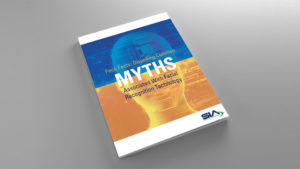 For many years, use of advanced facial recognition technology has benefited Americans in countless but underpublicized ways – helping to find missing children, fight human trafficking, secure the border, find dangerous criminals, bring sexual predators to justice and thwart identity thieves. Rapid growth, particularly for commercial uses, has prompted important discussions related to data privacy and increasing transparency and accountability measures; however, recent calls for complete bans on facial recognition technology (such as recently in San Francisco) are based on a misleading picture of how the technology works and its real-world uses. Americans deserve to know the facts. This resource addresses some of the common myths.
For many years, use of advanced facial recognition technology has benefited Americans in countless but underpublicized ways – helping to find missing children, fight human trafficking, secure the border, find dangerous criminals, bring sexual predators to justice and thwart identity thieves. Rapid growth, particularly for commercial uses, has prompted important discussions related to data privacy and increasing transparency and accountability measures; however, recent calls for complete bans on facial recognition technology (such as recently in San Francisco) are based on a misleading picture of how the technology works and its real-world uses. Americans deserve to know the facts. This resource addresses some of the common myths.
SIA Position Statements
Letter Expressing Concerns With Proposed Boston Facial Recognition Ban
 In a June 10, 2020, letter to Boston City Council President Kim Janey, SIA CEO Don Erickson expressed SIA’s concerns with a proposed ordinance banning facial recognition technology in Boston, which would prohibit any city government official from leveraging facial recognition technology or any information obtained using the technology. SIA believes all technology products must only be used for purposes that are lawful, ethical and nondiscriminatory. Facial recognition technology offers tremendous benefits to citizens when used effectively and responsibility. SIA believes that eliminating the potential benefits to Bostonians by completely banning its use is premature.
In a June 10, 2020, letter to Boston City Council President Kim Janey, SIA CEO Don Erickson expressed SIA’s concerns with a proposed ordinance banning facial recognition technology in Boston, which would prohibit any city government official from leveraging facial recognition technology or any information obtained using the technology. SIA believes all technology products must only be used for purposes that are lawful, ethical and nondiscriminatory. Facial recognition technology offers tremendous benefits to citizens when used effectively and responsibility. SIA believes that eliminating the potential benefits to Bostonians by completely banning its use is premature.
SIA Testimony on Facial Recognition Technology: Ensuring Commercial Transparency and Accuracy
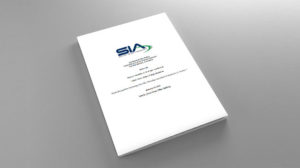 On Jan. 15, 2020, SIA joined the Future of Privacy Forum, NIST, the AI Now Institute at New York University and the Information Technology and Innovation Foundation to testify before the House Committee on Oversight and Reform at the hearing Facial Recognition Technology (Part III): Ensuring Commercial Transparency & Accuracy. Jake Parker, senior director of government relations at SIA, represented the association before the committee, discussing the importance of using facial recognition responsibly, beneficial applications of facial recognition in commercial and private-sector environments, the importance of transparency when applying facial recognition, how the industry is creating use principles, the takeaways of NIST’s recent report on the technology and the accuracy of facial recognition. [View SIA's press release.]
On Jan. 15, 2020, SIA joined the Future of Privacy Forum, NIST, the AI Now Institute at New York University and the Information Technology and Innovation Foundation to testify before the House Committee on Oversight and Reform at the hearing Facial Recognition Technology (Part III): Ensuring Commercial Transparency & Accuracy. Jake Parker, senior director of government relations at SIA, represented the association before the committee, discussing the importance of using facial recognition responsibly, beneficial applications of facial recognition in commercial and private-sector environments, the importance of transparency when applying facial recognition, how the industry is creating use principles, the takeaways of NIST’s recent report on the technology and the accuracy of facial recognition. [View SIA's press release.]
Coalition Letter Opposing a Moratorium on Facial Recognition Technology
 SIA, in partnership with the U.S. Chamber of Commerce and several other organizations, has urged Congress to collaborate with all stakeholders to address concerns raised by facial recognition technology and provide a consistent set of rules across the United States rather than issue a moratorium on the technology. In an Oct. 16, 2019, letter to Reps. Nancy Pelosi (D-Calif.) and Kevin McCarthy (R-Calif.) and Sens. Mitch McConnell (R-Ky.) and Charles Schumer (D-N.Y.), the coalition outlines the history of facial recognition and its prevalent use across various industries, the potential consequences of a moratorium on the technology and recent innovation and work to ethically and responsibly govern the technology.
SIA, in partnership with the U.S. Chamber of Commerce and several other organizations, has urged Congress to collaborate with all stakeholders to address concerns raised by facial recognition technology and provide a consistent set of rules across the United States rather than issue a moratorium on the technology. In an Oct. 16, 2019, letter to Reps. Nancy Pelosi (D-Calif.) and Kevin McCarthy (R-Calif.) and Sens. Mitch McConnell (R-Ky.) and Charles Schumer (D-N.Y.), the coalition outlines the history of facial recognition and its prevalent use across various industries, the potential consequences of a moratorium on the technology and recent innovation and work to ethically and responsibly govern the technology.
SIA Signs Multi-Organization Letter to Congress on Facial Recognition
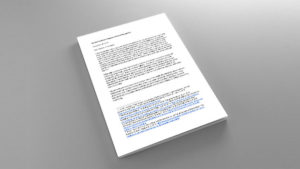 On Sept. 26, 2019, SIA joined a group of organizations, including the Information Technology and Innovation Foundation, CompTIA, the Consumer Technology Association, the Electronic Security Association and the National Police Foundation, in signing a letter to encourage Congress to consider many of the viable alternatives to bans so that law enforcement can use facial recognition technology safely, accurately and effectively.
On Sept. 26, 2019, SIA joined a group of organizations, including the Information Technology and Innovation Foundation, CompTIA, the Consumer Technology Association, the Electronic Security Association and the National Police Foundation, in signing a letter to encourage Congress to consider many of the viable alternatives to bans so that law enforcement can use facial recognition technology safely, accurately and effectively.
NEWS & ACCOMPLISHMENTS
- U.S. States and Cities Rethinking Bans, Setting Rules for Law Enforcement Use of Facial Recognition (May 10, 2022)
- Examples of Successful Use of Facial Recognition in Virginia (March 15, 2022)
- Virginia's New Rules for Facial Recognition and What They Mean (March 15, 2022)
- What Science Really Says About Facial Recognition Accuracy and Bias Concerns (July 23, 2021)
- Most State Legislatures Have Rejected Bans and Severe Restrictions on Facial Recognition (July 9, 2021)
- SIA Weighs In on Biometrics and Facial Recognition Legislation (Feb. 16, 2021)
- SIA Opposes Reintroduction of Facial Recognition and Biometric Technology Moratorium Act (June 16, 2021)
- Extensive New Poll Finds Most Americans Support Facial Recognition (Oct. 7, 2020)
- SIA Says Portland, Ore., Facial Recognition Bans Are Shortsighted (Sept. 10, 2020)
- SIA Releases Policy Principles to Guide the Use of Facial Recognition Technology (Aug. 18, 2020)
- Facial Recognition Success Stories Showcase Positive Use Cases of the Technology (July 16, 2020)
- SIA Strongly Opposes the Facial Recognition and Biometric Technology Moratorium Act Citing Immeasurable Benefits of the Proven Technology (June 26, 2020)
- SIA Supports Commonsense Legislation Addressing Facial Recognition (May 22, 2020)
- SIA Testifies on Facial Recognition Before California State Assembly (March 13, 2020)
- What NIST Data Shows About Facial Recognition and Demographics (Feb. 14, 2020)
- SIA Testifies on Facial Recognition Before New Jersey Assembly (Feb. 12, 2020)
- At House Committee Hearing, SIA Shares How Effective and Responsible Use of Facial Recognition Makes the Nation Safer (Jan. 15, 2020)
- SIA Applauds NIST Study on Facial Recognition (Dec. 20, 2019)
- Emerging Uses of Facial Recognition Technology in the Private Sector: Highlights From Information Technology and Innovation Foundation Briefing (Dec. 9, 2019)
- Why SIA Opposes Massachusetts' Far-Reaching Facial Recognition Technology Prohibition Bill (Oct. 28, 2019)
- SIA and Other Organizations Urge Congress to Consider Facts and Benefits of Facial Recognition (Oct. 18, 2019)
- State Legislation to Curtail Facial Recognition Technology (Feb. 21, 2019)

